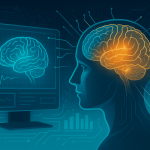
Top Photorealistic Rendering Technologies and Trends
What Are Photorealistic Rendering Technologies?
When you see a computer image that looks like a real photo, it’s likely created using photorealistic rendering technologies. These tools have become essential in gaming, film, architecture, and design. In this blog, you’ll discover the latest trends, tools, and techniques driving this innovation.
More importantly, you’ll learn how to apply them in your own IT projects or creative workflows.
The Evolution of Photorealistic Rendering Technologies
Over the years, photorealistic rendering technologies have come a long way. Earlier, creating lifelike images took hours or even days. Today, it’s much faster, thanks to real-time processing and advanced hardware.
Moreover, features like ray tracing and physically based rendering (PBR) have greatly improved realism.
Top Software Using Photorealistic Rendering Technologies
Several leading software platforms now use advanced photorealistic rendering technologies to deliver ultra-detailed visuals. Let’s explore a few of the best:
1. Unreal Engine 5
Unreal Engine 5 includes the powerful Lumen lighting system. As a result, it can produce high-quality global illumination and reflections in real time.
2. Blender
Blender offers two great engines Cycles for path tracing and Eevee for real-time rendering. It’s completely free and widely used by 3D artists and developers.
3. Autodesk Arnold
Arnold is a CPU-based renderer known for creating cinematic-quality VFX. In addition, it integrates well with software like Maya and 3ds Max.
Need more tool recommendations? Check out our IT resource center.
Real-Time Photorealistic Rendering Technologies in Gaming
Gaming is one area where photorealistic rendering technologies truly shine. Players now enjoy highly realistic environments, lighting, and textures all rendered in real time.
Real-Time Advancements
-
Ray Tracing improves light and shadow realism.
-
DLSS & FSR use AI to boost performance and resolution.
-
NVIDIA RTX makes games look almost lifelike.
For example, games like Cyberpunk 2077 and Forza Horizon 5 showcase what’s now possible.
Explore NVIDIA’s RTX technology
Future Trends in Photorealistic Rendering Technologies
Looking ahead, several exciting trends are shaping the future of photorealistic rendering technologies. Here’s what to watch:
H3: AI and Machine Learning
AI is revolutionizing how we render images. It speeds up workflows and fills in details without manual effort. For instance, NVIDIA OptiX uses AI denoising to reduce render times.
H3: Cloud Rendering
With cloud services, users can offload heavy rendering tasks. Services like AWS Thinkbox and Google Cloud offer high-speed rendering on demand. This reduces the need for expensive local hardware.
H3: Virtual Production
Virtual sets, powered by real-time rendering engines, are changing how movies are made. Studios use tools like Unreal Engine to build immersive virtual environments instantly.
Challenges with Photorealistic Rendering Technologies
Despite the benefits, photorealistic rendering technologies still have hurdles. Understanding these challenges can help you plan better.
-
High Costs: Advanced GPUs and storage aren’t cheap.
-
Steep Learning Curve: Mastering software like Blender or Maya takes time.
-
Slow Renders: Complex scenes still take hours to render at full quality.
However, continuous innovation is making these problems easier to manage. Our training guides can help you get started.
Applications of Photorealistic Rendering Technologies
These tools are used in more industries than you might think. Below are some of the top areas benefiting from photorealistic rendering technologies:
Architecture
Render entire buildings and interiors before construction begins. This improves client approval and speeds up design changes.
Film & TV
Directors can create entire worlds digitally, cutting costs on physical sets.
E-commerce
Display products in 3D to boost online conversions. Customers can see how a product looks under real lighting.
FAQ: Photorealistic Rendering Technologies
What are photorealistic rendering technologies?
They are tools and techniques used to create images that look just like real-life photos.
Which software is best for photorealistic rendering?
Top choices include Unreal Engine, Blender, and Autodesk Arnold.
Are these tools hard to learn?
Some have a steep learning curve. However, free tutorials and community support are widely available.
Can I use photorealistic rendering for free?
Yes! Blender is a top-quality free tool that’s perfect for beginners and pros.
Conclusion
Photorealistic rendering technologies are shaping the future of IT, design, and digital experiences. By understanding these tools and trends, you’ll be better prepared to innovate in your field.
Explore more in our Common Rendering Engines: Unity, Unreal & Beyond.
Author Profile

- Online Media & PR Strategist
- Hello there! I'm Online Media & PR Strategist at NeticSpace | Passionate Journalist, Blogger, and SEO Specialist
Latest entries
 ColocationNovember 12, 2025Colocation Security Model Implementation
ColocationNovember 12, 2025Colocation Security Model Implementation Artificial InteligenceNovember 7, 2025SAP AI Strategy Enterprise Advances and Developer Tools
Artificial InteligenceNovember 7, 2025SAP AI Strategy Enterprise Advances and Developer Tools Scientific VisualizationOctober 29, 2025Federated Learning Technology in Medical Privacy AI
Scientific VisualizationOctober 29, 2025Federated Learning Technology in Medical Privacy AI Scientific VisualizationOctober 29, 2025Brain Visualization Ethics: Balancing Innovation and Privacy
Scientific VisualizationOctober 29, 2025Brain Visualization Ethics: Balancing Innovation and Privacy

